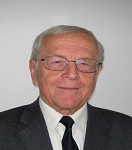Day 1 :
Keynote Forum
John Littleton
University of Kentucky, USA
Keynote: Evolving plant cells to function as green pharmaceutical factories
Time : 09:00-09:25

Biography:
John Littleton studied Pharmacology and Medicine as an MD PhD student at Kings College, London University in England. He continued academic research at Kings College, mostly in CNS target validation, as a Professor in the Pharmacology Department until 1993. At this time he spent a year at the University of Kentucky on a Wellcome Foundation fellowship where he started to develop an interest in novel technologies for plant drug discovery. He returned to Kentucky in 1995 to further develop the plant drug discovery aspect of his research, using novel methods of mutagenesis and high throughput screening in plant cell cultures. He co-founded the biotechnology company, NaprogenixInc, in 2002 to commercialize these methods. With support from NIH (SBIR/STTR awards) and Kentucky (matching funds for these) Naprogenix and the University of Kentucky have refined the technology to its current state. The technology now utilizes the expression of protein targets in plant cells, followed by mutagenesis and selection for clones generating metabolites which interact with the target.
Abstract:
Plants are capable of synthesizing bioactive compounds with a complexity beyond current chemical synthesis. The pathways to these metabolites have evolved over millennia because they confer a survival advantage on individuals within the plant species. For example, many bioactive metabolites have evolved to be targeted on key proteins in the nervous system of herbivorous insects, so that ingestion of plant material disables the insect. Individuals with mutations that favor the production of this metabolite therefore survive and reproduce, because they are less likely to be eaten by the insect. This Darwinian evolution by natural selection has strong parallels with pharmaceutical R & D in which combinatorial chemical synthesis (CCS) is used to “evolve†a library of compounds toward a key therapeutic target protein, with “selection†by high throughput pharmacological screening (HTPS) for activity at this target. If we could persuade plants to redirect their extraordinary biosynthetic capacity toward target proteins that are valuable to us rather than to the plant, then plants might once again become important players in pharmaceutical R & D. This is theoretically simple. First we express our therapeutic target protein in plant cells and devise a procedure in which these transgenic cells will survive if they are producing metabolites which have the required activity on the target. This is our (un)natural selection pressure, which also mimics selection for target activity by HTPS. Then we create a population of the transgenic cells with random gain-of-function mutations (mimicking a CCS library) and expose them to the unnatural selection pressure. Those mutant transgenic cells which survive should therefore be highly enriched in individuals that are over-producing metabolites with the required activity at the therapeutic target protein. Some of these will be normally present in the wild-type plant but, because random gain-of-function mutagenesis can switch on genes which are normally quiescent, some of the active metabolites will probably be “novelâ€. If so, this “target-directed evolution†of plant biosynthesis will have generated novel medicinal plant cells with unique mutations that result in a specific pharmacological phenotype. This provides protection of IP in several different products in addition to novel active compounds. Thus, the mutant cells themselves can become production systems for active metabolites that are too complex for synthesis, and the genes which have been activated can be identified and used for genetic engineering of the same or other plant species. So far, proof of concept studies have successfully used several different plant species transformed with target proteins including human nuclear receptors, enzymes and transporter proteins. One of these, the generation of metabolites which inhibit the human dopamine transporter in mutant Lobelia cultures, will be discussed in detail later. This technology is therefore capable of “telling†plant cells to biosynthesize metabolites with activity at specific therapeutic target proteins. It has the great advantage of accessing the whole genomic / biosynthetic potential of a plant species. It qualifies as green chemistry in requiring only the normal chemical constituents of plant cell culture medium as the starting materials.
Keynote Forum
Lothar Brecker
University of Vienna, Austria
Keynote: Are regional features a key to globalize sustainability in chemistry?
Time : 09:25-09:50

Biography:
Lothar Brecker received his diploma and PhD in Chemistry from the University of Dortmund in 1993 and 1996, respectively. After working at Graz University of Technology and Research Center Borstel, he became an Associate Professor at the University of Vienna. There he actually serves as Vice Dean of the Faculty of Chemistry, Director of the Chemistry Studies Program and Deputy Head of the Department of Organic Chemistry. His main research activities are in the fields of using NMR to study enzyme ligand binding, interactions between small molecules, and structure determination of natural products. He has published 90 papers in reputable journals.
Abstract:
Green Chemistry and sustainability in Chemistry are important topics since more than two decades. A couple of standards and public regulations have been defined, in particular in industrialized countries. The chemical industry nowadays checks their processes and activities with respect to sustainability. Frame conditions for these developments, however, differ entirely between different nations. Several local and regional aspects require diverse applications in the design of effective sustainable concepts. Hence globalization of Green Chemistry cannot be based on an application of a single standardized plan. Rather a globalized basic frame of targets should be aspired to reach the collective good. In realization regional aspects have to be considered. They should intend optimal applications of sustainability with respect to environmental, national and political frames. Reaching such globalized way of thinking can, however, not been managed within a few years. It is necessary to agree on globally long-term concerted approaches, which incorporate various regional necessities. And it is essential to globalize the ideas of sustainability and worldwide interactions, which will be generally accepted and regionally applied.
Keynote Forum
Basudeb Saha
Spero Energy, Inc., USA
Keynote: Functionalized catalysts for the production of high value chemicals and high octane fuels from Lignocellulose
Time : 10:05-10:30

Biography:
Basudeb Saha holds BS and MS degrees in Chemistry from Calcutta University and a PhD from the Indian Association for the Cultivation of Science. He did Postdoctoral research with Professor James Espenson at Iowa State University, and then moved to the polyurethane business R&D division of Dow Chemical Company where he led several breakthrough and implementation research projects. Prior to joining Purdue University in 2013, he served on the faculty at the University of Delhi. His research interests include technology development for renewable chemicals and fuels from sustainable biomass, and the synthesis of mesoporous catalysts with desired functionalities. He is also the Chief Technology Officer of Spero Energy, Inc. He published 60 research articles and holds three patents.
Abstract:
Synthesis of functionalized solid catalysts for the manufacture of platform chemicals and fuel candidates from naturally abundant lignocellulosic biomass has received significant attentions in recent years. We have designed and developed several heterogeneous mesoporous materials for dehydration and hydro deoxygenation reactions. These materials having Brønsted and Lewis acid sites are effective for upgrading the carbohydrate fractions of lignocelluloses into high selective 5-hydroxylmethylfurrural (HMF) and furfural (Ff). These top-ten platform chemicals are precursors for several high value chemicals (HVCs) and advanced fuels that are currently obtained from petroleum feedstock. This presentation will emphasize the recent approach on the synthesis of such materials and their catalytic applications for the production of furfurals and further upgrading furfurals into high octane fuels.
Keynote Forum
John C Warner
President and Chief Technology Officer Warner Babcock Institute for Green Chemistry, USA
Keynote: Green Chemistry: An opportunity for growth and competitive advantage
Time : 09:50-10:35

Biography:
John C Warner is the recipient of the 2014 Perkin Medal, widely acknowledged as the highest honor in American Industrial Chemistry. He received his BS in Chemistry from UMASS Boston, and his PhD in Chemistry from Princeton University. After working at the Polaroid Corporation for nearly a decade, he then served as Tenured Full Professor at UMASS Boston and Lowell. In 2007 he founded the Warner Babcock Institute for Green Chemistry, LLC where he serves as President and Chief Technology Officer, and Beyond Benign. He is one of the founders of the field of Green Chemistry, co-authoring the defining text Green Chemistry: Theory and Practice with Paul Anastas. He has published over 200 patents, papers and books. His recent work in the fields of pharmaceuticals, personal care products, solar energy and construction and paving materials are examples of how green chemistry principles can be immediately incorporated into commercial relevant applications. He received The 2004 Presidential Award for Excellence in Science Mentoring, the American Institute of Chemistry\\\'s Northeast Division\\\'s Distinguished Chemist of the Year for 2002 and the Council of Science Society President’s 2008 Leadership award. He was named by ICIS as one of the most influential people impacting the global chemical industries. In 2011 he was elected a Fellow of the American Chemical Society and named one of “25 Visionaries Changing the World†by Utne Reader.
Abstract:
People often discuss “barriers†to the implementation of green chemistry. This leads to the impression that there is some form of “push back†in the market for sustainable technologies. However, if a technology has attractive performance and cost attributes, it is unlikely that the additional presence of “sustainable†attributes will inhibit its adoption. Most often the “push back†in the market is related NOT to the sustainability aspect, but to the absence of sufficient performance and cost aspects of a product. History has shown us that for a technology to be successful in the market place, it cannot depend solely on its “sustainability†but must also be consistent with the traditional drivers. Developing successful green chemistry technologies therefore is fundamentally a challenge in innovation at the molecular level. An important reason why technology organizations have a difficult time meeting this challenge is because most academic chemistry and materials science programs do not adequately teach students techniques to help them design products that are sustainable. Universities around the world are finding ways to add the principles of green chemistry into their curriculum, and one day most, if not all, scientists will have the adequate training - but this will take several years. Until the entire chemistry workforce is fully trained in green chemistry, those organizations who have internalized green chemistry for themselves will enjoy significant competitive advantage. This presentation will discuss steps that companies at all positions of the supply chain can take to ensure that they get to, and stay at, the cutting edge of green chemistry.
- Track 1: Basic Principles and New Trends in Green Chemistry
Track 3: Green Synthesis-Designing the Starting Materials
Track 4: Green Catalysis
Track 6: Green Metrics and Measurements
Location: Hyatt Regency Orlando International Airport
Session Introduction
John Littleton
University of Kentucky, USA
Title: Green pharmaceutical chemistry: target-directed evolution of plant secondary metabolism

Biography:
John Littleton studied Pharmacology and Medicine as an MD PhD student at Kings College, London University in England. He continued academic research at Kings College, mostly in CNS target validation, as a Professor in the Pharmacology Department until 1993. At this time he spent a year at the University of Kentucky on a Wellcome Foundation fellowship where he started to develop an interest in novel technologies for plant drug discovery. He returned to Kentucky in 1995 to further develop the plant drug discovery aspect of his research, using novel methods of mutagenesis and high throughput screening in plant cell cultures. He co-founded the biotechnology company, NaprogenixInc, in 2002 to commercialize these methods. With support from NIH (SBIR/STTR awards) and Kentucky (matching funds for these) Naprogenix and the University of Kentucky have refined the technology to its current state. The technology now utilizes the expression of protein targets in plant cells, followed by mutagenesis and selection for clones generating metabolites which interact with the target.
Abstract:
Plants have evolved bioactive metabolites of great complexity and potency, however the compounds found in the wild-type plant representonly a fraction of the genomic capability of the species, If we could only “tell” plants what bioactivity we required from them, this would open a new chapter in plant drug discovery. Naprogenix’ novel technology achieves this by “evolving” plant biosynthesis,via mutation and selection,toward metabolites targeted on specific proteins. This can increase yields of known compounds, or generate active metabolites which are not detectable in the wild-type plant. Proof of concept has used several plant species and several targets, but this example describes the production of inhibitors of the human dopamine transporter (DAT- amolecular target in Parkinson’s disease) in cell cultures of a native Lobelia species. This plant contains small amounts of lobinaline, a previously uninvestigated inhibitor of the DAT, which would be a conventional lead compound except that it is a complex binitrogenous alkaloid with 5 chiral centers and no known chemical synthesis. However, this complexity makes it an excellent example of the value of target-directed biosynthesis. First, we expressed the human DAT target protein in cells of this species, making them susceptible to a cytotoxin which is accumulated intracellularly by the DAT. Mutants which are overproducing inhibitors of the DAT now have a survival advantage when exposed to the toxin. About 1/300 gain-of-function mutants survived selection, providing 120 toxin-resistant individual clones. Extracts from 41 of these showed greatly increased levels of DAT inhibition, and 16 of these were overproducing lobinaline. However, the other 25 clones were overproducing other metabolites, 8 of which were not detectable in the wild-type plant. Several of these showed chemical similarity to lobinaline and putatively represent a biosynthetic active compound library. In this way it is possible to tell a plant species to synthesize metabolites with a specific bioactivity and, by selection, the plant cell also does the initial pharmacological screening. Mankind can become the orchestrator of plant biosynthetic evolution rather than its passive beneficiary.
Marion H Emmert
Worcester Polytechnic Institute, USA
Title: Transition Metal Catalysis for Non-Directed C-H Functionalization

Biography:
Marion HEmmertreceived her PhD from the University of Munster (Germany) working with Professor Gerhard Erker on model polymerization catalysts.Following Postdoctoral work at the University of Michigan with Professor Melanie Sanford, she joined the faculty at WPI in 2011 as Assistant Professor of Chemistry, with joint appointments in Materials and Chemical Engineering since 2012. Her research interest focuses on the development of new, sustainable processes; current projects includeC-H functionalizations, aerobic oxidations at low oxygen concentrations,and recycling processes for rare earth materials.
Abstract:
Catalysis is one of the most powerful tools of green chemistry, enabling reactions with lower energy consumption and providing new pathways for bond formation. Catalytic C-H functionalizations, in particular, are powerful methodologies for installing functional groups in previously non-functionalized positions of a molecule and the use of catalyst directing groups has enabled a wide variety of exciting bond formations with remarkable selectivities and broad applicability.One of the greatest current challenges in this research area is how to catalyze analogous C-H functionalization reactivity without the presence of catalyst directing groups. Such transformations often suffer from the lack of a strong catalyst pre-coordination, which can lead to lower reactivities.The research described in this presentation will showcase basic principles of catalyst and methodology design to achieve non-directed C-H functionalizations and provide insights into reactivity and selectivity-determining factors for the C-H aminations of arenes and the alpha-C H oxidation of tertiary amines.

Biography:
Joseph Fortunak obtained his PhD in synthetic organic chemistry with Professor Barry M. Trost at the University of Wisconsin-Madison. After postdoctoral work with Professor Ian Fleming at Cambridge University, Joseph joined the Process Development group at SmithKline Beecham (now GlaxoSmithKline) in 1983. Joseph also worked at Dupont Pharmaceuticals and was the Head of Global Chemical Development at Abbott Labs. Joseph is now a Professor of Chemistry and Pharmaceutical Sciences at Howard University in Washington, DC. Joseph teaches postgraduate courses and is helping develop independent BSc and MS programs in drug development and regulation at the Kilimanjaro School of Pharmacy in Tanzania and the University of Ibadan in Nigeria. These African-owned and African-managed initiatives are unique for Sub-Saharan Africa. Joseph collaborates with a number of international groups including the World Health Organization, UNITAID, UNIDO, UN ANDI, the Clinton Health Access Initiative and the Department of Trade and Industry in South Africa. New Chemistry that his group has initiated at Howard University has contributed to lowering the cost of HIV/AIDS medicines for 14 million people in LMICs.
Abstract:
Originator pharmaceutical companies employ excellent scientists in development and manufacturing. The “just-in-time” approach to pharmaceutical development expenditures and the emergence of new chemistry and technologies, however, means that opportunities exist to improve commercial manufacturing processes for Active Pharmaceutical Ingredients (APIs) and finished dosage forms. In 2005 the “United Nations Millenium Development Goals: Progress Report” estimated that the richest 15% of the world’s population consumes 91% of medicines. This situation is only modestly improved in the past decade. Most products on the World Health Organization’s “Essential Medicines List” are theoretically available to low- and middle-income countries (LMICs) through generic production, multiple forms of licensing, or favorable access pricing. Generic production of critical medicines for HIV/AIDS, Malaria, and Hepatitis C has greatly reduced prices – in many cases to less than 1% of high-income country pricing. Academic research has the ability to focus on optimizing the chemistry for producing critical medicines “to the nth degree” whereas even generic manufacturers cannot focus on the absolutely lowest cost of producing essential medicines. We use green chemistry and flow processing to reduce the cost of manufacturing critical APIs for HIV/AIDS (the HIV Protease Inhibitors darunavir and atazanavir), Hepatitis, and Malaria (amodiaquine, piperaquine, and lumefantrine), with a focus on green chemistry and on continuous processing. This includes an organocatalytic approach to simultaneously setting two contiguous chiral centers in darunavir and atazanavir with complete control of stereochemistry.
David Morales-Morales
Instituto de Quimica, Mexico
Title: Suzuki-Miyaura Cross coupling reactions in water. New hydrophilic ligand scaffolds from Pincer compounds to cocoa beans.

Biography:
David Morales-Morales did his PhD at the University of Essex, UK and Postdoctoral studies at the University of Hawaii at Manoa. He is Professor of Chemistry at Instituto de Química-UNAM in Mexico. His research covers organometallic and coordination chemistry with platinum group metals. He has published some 150 papers, reviews and chapters in books. He was the Editor of the book “The Chemistry of the Pincer Compounds” (Elsevier). He has presented over 60 plenary and invited conferences around the world and is a part of the international editorial and advisory boards of the journals ARKIVOC and ChemCatChem (Wiley-VCH-Germany) and of the Homogeneous Catalysis Symposia (ISHC).
Abstract:
Catalysis is at the core of green chemistry, constituting one of the principles of this doctrine and representing one of its fundamental pillars. Among the most celebrated catalyzed chemical transformations are the cross coupling reactions and one that has had a tremendous development in the last decade is the Suzuki-Miyaura reaction. Being considered nowadays a fundamental power tool in organic synthesis. Recent advances in this area deal with the use of this process in water, using alternative energy sources, employing highly reactive and selective catalyst, preferable soluble in water. Thus, in this work we will present recent developments on the design and synthesis of novel hydrophilic ligand scaffolds including pincer ligands, secondary amines having hydrophilic substituents and naturally occurring compounds such as theophylline and other xanthine derivatives. The results on the use of these ligands in cross coupling reactions in water or aqueous media will be discussed.
Basudeb Saha
Spero Energy, Inc.
USA
Title: Functionalized Catalysts for the Production of High Value Chemicals and High Octane Fuels from Lignocellulose

Biography:
BasudebSaha holds BS and MS degrees in Chemistry from Calcutta University and a PhD from the Indian Association for the Cultivation of Science. He did Postdoctoral research with Professor James Espenson at Iowa State University, and then moved to the polyurethane business R&D division of Dow Chemical Company where he led several breakthrough and implementation research projects. Prior to joining Purdue University in 2013, he served on the faculty at the University of Delhi. His research interests include technology development for renewable chemicals and fuels from sustainable biomass, and the synthesis of mesoporous catalysts with desired functionalities. He is also the Chief Technology Officer of Spero Energy, Inc.He published 60 research articles and holds three patents.
Abstract:
Synthesis of functionalized solid catalysts for the manufacture of platform chemicals and fuel candidates from naturally abundant lignocellulosic biomass has received significant attentions in recent years. We have designed and developed several heterogeneous mesoporous materials for dehydration and hydrodeoxygenation reactions. These materials having Brønsted and Lewis acid sites are effective for upgrading thecarbohydrate fractions of lignocelluloses into high selective 5-hydroxylmethylfurrural (HMF) and furfural (Ff). These top-ten platform chemicals are precursors for several high value chemicals (HVCs) and advanced fuels that are currently obtained from petroleum feedstock. This presentation will emphasize the recent approach on the synthesisof such materials and their catalytic applications for the production of furfurals and further upgradingfurfuralsinto high octane fuels.
Robert R Freeman
Frontier Laboratories Ltd., Japan
Title: Rapid catalyst screening using a high pressure, Tandem micro-Reactor GC/MS

Biography:
Freeman has worked in gas-phase columns and instrumentation for over 25 years. In 1975, he designed and built the first gas chromatographic system that could be used to analyze THC in blood and urine. After careers at Varian, Hewlett Packard and J&W Scientific, Dr. Freeman founded Air Toxics Ltd. which has become the world’s largest ‘air’ environmental laboratory. Currently, Dr. Freeman works with the R/D group at Frontier Laboratories. Dr. Freeman has authored two books, several chapters and more the 50 articles on various aspects of separation sciences.
Abstract:
The possibility of converting various biomass feed stocks directly to biofuels or value-added specialty chemicals using catalytic pyrolysis has precipitated a demand for a fast, reliable method to characterize newly developed catalysts. Catalytic pyrolysis is a three-step process: (1) the feedstock is first pyrolyzed (often referred to as “fast pyrolysis”), (2) the pyrolyzates flow through a catalyst bed and (3) the ‘products’ are identified and quantitated. The Tandem Micro-Reactor GC/MS system integrates these three processes into a single instrument. Studies indicate that by the end of the year bioethanol production will exceed the needs of E10 fuels, resulting in an oversupply of ethanol. Consequently, bioethanol appears to be the platform molecule for the production of value-added chemicals in the next decade. Thus, the catalytic conversion of ethanol appears to be an ideal process to use as a benchmark for illustrating the benefits of using the tandem micro-Reactor; ethanol is stable, and the ethylene selectivity is high using readily available zeolite catalysts. This work describes the findings of an evaluation of the Tandem Micro-Reactor GC/MS system based on the conversion of ethanol. The results of the following tests will be reported: 1. Monitor hydrocarbons formed as the temperature of the catalysis is heated at a fixed rate. 2. Monitor hydrocarbons formed at selected catalyst temperatures. 3. Determine the amount of sample converted to char using EGA-MS. 4. Monitor the surface activity of the catalyst using ethylene as a test probe.

Biography:
Amy S Cannon holds the world's first PhD in Green Chemistry from the University of Massachusetts Boston. She is the co-founder and Executive Director of Beyond Benign, a non-profit organization dedicated to green chemistry education. She worked as an Assistant Professor and Director of Outreach and Community Education at the Center for Green Chemistry at UMass Lowell until 2007 when she started Beyond Benign. She has industrial experience as an analytical chemist for the Gillette Company and as a scientist for Rohm and Haas. Through Beyond Benign, she leads many initiatives aimed at transforming chemistry education in K-12 and higher education.
Abstract:
Green chemistry by definition involves the intentional design of safer products and processes that reduce or eliminate hazardous substances. In order to ensure the adoption of green chemistry practices on industrial scales, green chemistry must be wholly adopted into educational systems and research initiatives. Molecular designers, chemists and engineers must all come to the research bench or factory setting with the knowledge and tools that will enable the reduction of hazard within the processes or products they design. This presentation will discuss hazard reduction as a design criterion and novel approaches for teaching the design of safer, greener technologies in higher education. This presentation will also highlight the Green Chemistry Commitment program, an initiative lead by Beyond Benign, a non-profit organization dedicated to green chemistry education. The Green Chemistry Commitment aims to transform chemistry education in higher education to enable students to enter industrial positions with the skills and knowledge to design safer, more sustainable products and processes.
Salah S Massoud
University of Louisiana at Lafayette, USA
Title: Recent Developments of the Fixation of atmospheric CO2 by Transition Metals and Lanthanide Complexes

Biography:
Salah S Massoud received his PhD from Boston University and has Postdoctoral studies at Basel University (Switzerland), University of Alberta (Canada) and visiting Professor at Ohio and Houston Universities. He has published more than 135 papers in reputed and peer-reviewed journals and has been serving as an Editorial Board Member of Magnetochemistry Journal, Journals of Advances in Chemistry and Modern Chemistry and Applications (JMCA) and Dataset Papers in Materials Science.
Abstract:
The chemical fixation and activation of CO2 by metal complexes may lead to certain devices that can eliminate the CO2 present in the air and hence controlling its concentration and reducing the environmental problems due to the greenhouse effect and global warming. This can be achieved by designing “inexpensive inorganic compounds” that rapidly and effectively catalyze the atmospheric CO2 fixation. In slightly basic solutions, the atmospheric fixation of CO2 by metal complexes, through hydroxo-species, afford the carbonato metal complexes. A number of simple N-donor ligands and multi-dentate Schiff bases containing two or three N-atoms, phenolic and alkoxy groups are to used synthesize a series of 3d(M(II) = Ni, Cu, Zn) and 4f(Ln(III) = lanthanides) complexes. The incorporation of lanthanide (III) ion into the skeleton of3d complexes to produce 3d-4f heteronuclear metal complexes should increase the affinity of the compounds for CO2 fixation into the Ln (III) pocket (Ln3+ ion is a hard Lewis acid which strongly bound to hard Lewis bases; O-donor species such as CO32- ion). The carbonato complexes are not only interesting from the structural and geometrical points of view, but alsomay result in the discovery of interesting Single Molecular Magnets (SMM’s) which can be used to increase the memory of the computers. The resulting carbonato-bridged compounds can also be used to prepare some useful organic compounds. Recent developments concerning synthesis and structure characterization of different coordination carbonato-bridged compounds, magnetic properties and their potential applications will be addressed.
Dequan Xiao
University of New Haven, USA
Title: Exploring the Mildest Thermodynamic Conditions for the Inverse Design of Hydrogenation Catalysts

Biography:
Dequan Xiao received a PhD degree in chemistry from Duke University. From 2009 to 2013, he worked as a postdoctoral associate at Yale University. Since 2013, He becomes an assistant professor at the University of New Haven. His research interests focus on developing theoretical and computational chemistry methods to study materials properties and to perform inverse molecular design, for the applications in renewable energy science, soft matters, biophysics, and green chemistry. He has published 25 peer-reviewed articles, obtained 4 patents, and written two review articles on “inverse molecular design” and “green catalysts for biomass conversion”, respectively.
Abstract:
Designing green catalysts is the key for the development of next-generation technologies to convert biomass molecules into liquid fuels or other value-added chemicals. Recently, a few hydrogenation catalysts have been developed to effectively drive biomass conversions. However, designing hydrogenation catalysts that can work under mild conditions such as low pressure, low temperature, and green solvent remains a challenge. To provide the insights for designing greener hydrogenation catalysts, we explored the thermodynamics conditions (e.g., temperature, pressure, and solvents) for various hydrogenation or hydrogenolysis reaction based on biomass model compounds, by combining the ab initio quantum chemistry calculations and experimental explorations. Our results show that thermodynamically it is indeed possible to design greener catalysts (e.g., robust and economic catalysts that work under mild conditions) for converting biomass molecules into value-added chemicals. In addition, we showed that optimal hydrogenation catalysts could be sought under the guidance of inverse design methods.
Emily C Mundorff
Hofstra University, USA
Title: Alteration of the substrate specificity of alanine dehydrogenase

Biography:
Emily CMundorff completed her PhD in year 2000 from UC Berkeley.She worked at Maxygen and Codexis as a Bioinformatic Scientist until 2010.While at Codexis she received three Presidential Green Chemistry Challenge awards for her work in support of the directed evolution of enzymes to be used as biocatalysts in pharmaceutical manufacturing processes.She then moved to academia as an HHMI Interdisciplinary Science Fellow at Vassar College from 2011-2012 and is now an Asst. Professor of Chemistry at Hofstra University.She is an inventor on more than 35 patents and has coauthored 14 papers.Her lab is interested in the evolution of new substrate specificities in enzymes.
Abstract:
What determines the evolvability of an enzyme?Is an enzyme’s apparent natural history a good guide to determine the ease of evolving new substrate specificities? The L-alanine dehydrogenase (AlaDH) has a natural history that suggests it would not be a promising candidate for expansion of substrate specificity by protein engineering: It is the only amino acid dehydrogenase in its fold family, it has no sequence or structural similarity to any known amino acid dehydrogenase, and it has a strong preference for L-alanine over all other substrates. By contrast, engineering of the Amino Acid Dehydrogenase superfamily members has produced catalysts with expanded substrate specificity; yet, this enzyme family already contains members that accept a broad range of substrates. To test whether the natural history of an enzyme is a predictor of its innate evolvability, directed evolution was carried out on AlaDH. A single mutationintroduced intothe AlaDH from Mycobacterium tuberculosis(MtAlaDH) completely alters its substrate specificity pattern enabling activity towards a range of larger amino acids.Saturation mutagenesis libraries in this mutant background additionally identified a double mutant with improved activity toward hydrophobic amino acids. The catalytic efficiencies achieved in AlaDH are comparable with those that resulted from similar efforts in the Amino Acid Dehydrogenase superfamily and demonstrate the evolvability of MtAlaDH specificity toward other amino acid substrates.
Sandra Luber
University of Zurich, Switzerland
Title: Efficient cubane catalysts for artificial water-splitting

Biography:
Sandra Luber received her MSc and PhD degree from ETH Zurich in 2007 and 2009, respectively. After postdoctoral studies at Biozentrum of the University of Basel (2010) and Yale University (2010-2011), she joined BASF SE in 2012. Currently, she works on her postdoctoral lecturing qualification (Habilitation thesis) at the University of Zurich. Awards include the ETH medal for an outstanding PhD thesis as well as the IBM Research Prize for Computer Modelling and Simulations in Chemistry, Biology, and Materials Science.
Abstract:
Solar energy is an inexhaustible energy source for a long-term solution to the global energy consumption. The storage of large amounts of light energy can be achieved by conversion into chemical energy saved in biomass. Artificial photosynthesis permits the splitting of water into dihydrogen and dioxygen and is therefore a sustainable strategy to meet the increasing worldwide need for clean energy. This requires the development of high-performance waterreduction and water-oxidation catalysts (WOCs) that can be combined to an overall artificial photocatalytic water-splitting system. Very recently, the first Co(II)-based cubane WOCs have been presented. These WOCs excel through hitherto unprecedented structural analogies to the oxygen-evolving complex of nature’s photosystem II. We study their structure and activity by means of density functional theory (DFT) in combination with innovative DFT-based molecular dynamics. I will give an overview about our recent results for the design of efficient cubane-type catalysts.
Arik Kar
University of Cambridge, UK
Title: SnO2-PbS nanocomposites and hetero structures: Fabrication, structures and applications

Biography:
Arik Kar obtained his BSc (Hons) in Chemistry from Serampore College, University of Calcutta, in 2005. In 2007, he obtained his MSc degree in Chemistry from the University of Calcutta with a specialization in Inorganic Chemistry. He then completed his PhD in Materials Science from Jadavpur University in 2013. He was awarded a Newton International Fellowship from the Royal Society for the academic years 2014–2016. He is now continuing his research as a Newton International Fellow at the University of Cambridge. He has published 23 papers in reputed journals and has presented his research at 9 international conferences so far.
Abstract:
SnO2 is a significant metal-oxide, n-type wide band gap (3.6 eV at 300K) semiconductor. Due to its outstanding electrical, optical and electrochemical properties, SnO2 offers a broad range of applications in solar cells, catalytic support materials, transparent electrodes and solid state chemical sensors. However, in terms of several of these applications, pure SnO2 nanocrystals show a few classical drawbacks, mainly due to their large surface-to-volume ratio. Two standard strategies to advance the application-based performance of SnO2 are its mixing and coating with another semiconductor material. Nowadays, nanocomposite and heterostructure materials comprised of two semiconductors of different band gap are proving of immense interest to researchers due to their superior electrical, optical, and electrochemical properties. In my presentation, I will discuss the fabrication, structures and application-based properties of SnO2-PbS nanocomposite and heterostructure materials. First I will describe some innovative solution and microwave synthetic techniques for the preparation of pure SnO2 nanoparticles/nanospheres, pure PbS nanocubes, SnO2-PbS nanocomposites and heterostructures. The structures are confirmed by X-ray diffraction (XRD)/Reitveld study, Raman spectroscopy and transmission electron microscopy (TEM) analysis. Elemental mapping and line scan EDX analysis successfully demonstrate the effective PbS deposition on SnO2 nanospheres as well as the mixing of SnO2 and PbS to form nanocomposites. I will present a model to explain different relaxation processes in SnO2-PbS nanocomposite and heterostructure which helps to understand how the two semiconductors interact. Lastly, I will discuss some application-based properties of as-synthesized nanocomposite and heterostructure materials which are found to be significantly improved relative to pure SnO2 or PbS.
Angelo Albini
University of Pavia, Italy
Title: The contribution of photochemistry and photocatalysis to Green Chemistry

Biography:
Angelo Albini studied chemistry at the University of Pavia, and after Postdoctoral studies in Germany, Canada and Denmark and a period as Professor in Torino University, he returned to Pavia. His research always centered on photochemistry and green chemistry. He published more than 400 papers in reputed journals and is serving as an Editorial Board Member of reputed journals.
Abstract:
In his pioneering work at the beginning of the 20th Century, Giacomo Ciamician pointed to the contrast between the harsh conditions under which chemicals were synthesized in the lab and the mild conditions under which the same compounds were synthesized by green plants, with no show of “brute force”. What made the difference was of course solar light and Ciamician devoted 25 years of research to the study of reactions caused by exposing to the sun a variety of compounds. Thus, he can be considered the Father of Green Chemistry and Photochemistry at the same time. A century afterwards a variety of photochemical and photocatalytic methods (including solar and visible light) are available to practitioners of synthesis. The actual “green” character of such reactions is discussed in a number of significant cases, highlighting underrated opportunities and possibly encountered pitfalls. The role of photochemical approach in the future development of chemical industry is briefly outlined.

Biography:
Xumu Zhang was born in 1961 in Hubei Province, China. He received his BS degree in chemistry (1982) from Wuhan University, China, and MS in chemistry (1985) from the Chinese Science Academy, Fuzhou, China, under the supervision of Professor Jiaxi Lu. He received his PhD in chemistry in 1992 from Stanford University under the guidance of James P Collman. He then carried out Postdoctoral work at Stanford for two years. In 1994, he joined the department of chemistry at The Penn State University as an Assistant Professor of chemistry. In 1999, he was promoted to an Associate Professor of chemistry. In 2003, he was promoted to Professor of chemistry. In 2007, he moved to The State University of New Jersey as Distinguished Professor. His research interests include the development of new chiralligands for asymmetric catalysis, the investigation of asymmetric hydrogenation and carbon−carbon bond-forming reactions, the synthesis of biologically active compounds, and the discovery of new synthetic methods.
Abstract:
William Knowles, in his 2001 Nobel Lecture, described his 1960s and 70s work in developing asymmetric hydrogenation catalysts. Now, almost 40 years later, although major advances have been made (e.g. Professor Noyori’s Nobel prize winning work in asymmetric hydrogenation), significant challenges still remain. On the one hand, this presentation describes innovation in asymmetric hydrogenation catalysis from both an academic and industrial perspective. It highlights recent advances and the commercialization processes regarding asymmetric hydrogenation. The broad array of asymmetric hydrogenation catalysts and their numerous applications for a variety of functional group hydrogenations will be reviewed. We will emphasis on the practical applications of asymmetric hydrogenation to make chiral pharmaceuticals and address unmet needs in asymmetric hydrogenation. The knowledge gained in this research can lead to “next generation” catalysts.
Ana Rosa Silva
Aveiro University, Portugal
Title: Asymmetric heterogeneous catalysts based on copper(II) complexes with bis(oxazoline) ligands

Biography:
Ana Rosa Silva has completed her PhD in Chemistry in 2003 from Porto University and Postdoctoral studies from Porto and York University. She has been an Assistant Researcher at Porto University (PT), Marie-Curie Transfer of Knowledge Postdoctoral fellow at Unilever (UK) and Assistant Researcher at Aveiro University (PT). Now, she is Principal Researcher at Aveiro University. She has published more than 56 papers in international refereed journals. She has been working in the area of asymmetric heterogeneous catalysis, green chemistry, and homogeneous/heterogeneous liquid phase oxidation catalysis.
Abstract:
Catalysis is a source of atom economic and low costtechnologies. It is therefore one of the pillars of green chemistry. Asymmetric catalysis is unique in the sense that a minute quantity of chiral catalyst is sufficient to generate large amounts of enantiopure compounds. Bis (oxazoline)ligands are one of the very versatile chiral ligands systems used in asymmetric catalysis.A large number of organic transformations have been enantio selectively catalyzed by their transition metal complexes. Among other asymmetric organic transformations, the copper (II) complexes are very efficient in the cyclopropanation and aziridination of alkenes and in the kinetic resolution of 1, 2-diols. These ligands are commercially available, but are expensive. Therefore there has been an intense research effort to make them recyclable and reusable, thus economical. The most used strategy has been the covalent immobilization onto several supports with varying degree of success depending on the type of porous support and immobilization methodology. In this presentation the importance of the support properties in the stability and performance of immobilized copper (II) bis (oxazoline) complexes in asymmetric catalysis will be shown.
Frank Wiesbrock
Polymer Competence Center Leoben, Austria
Title: Green chemistry in niche applications: Development of “green†photoresists

Biography:
Frank Wiesbrock completed his PhD thesis from the Munich University of Technology. After Postdoctoral stays at the Eindhoven University of Technology and the National Hellenic Research Foundation, he completed his habilitation in Macromolecular Chemistry at the Graz University of Technology in 2012. He has joined the Polymer Competence Center Leoben in 2012. He is the manager of the Poly Comp - Functional Polymer Composites - project. He has published more than 60 papers and is Editor-in-Chief of the American Journal of Macromolecular Science and the Editorial Board Member of Polymers and Current Microwave Chemistry.
Abstract:
The idea that the synthesis and application of chemicals should more significantly be determined by environmental aspects has met international agreement. Nonetheless, “green” alterations so far have often been met by niche products. On the example of photoresists, possible strategies for a more environmental benign synthesis and formulation as well as their application considering health concerns will be presented. Due to their ability to reproduce 2.5- and 3-dimensional patterns, polymer-based photoresists have been applied for wafer production, lab-on-a-chip manufacturing, and surface finishing. So-called negative photoresists are cross-linked upon irradiation with UV light; non-cross-linked areas remain soluble and can be removed from the resist by simple dissolution. After the development of a water-soluble photoresist, eliminating volatile organic solvents from that process step (WO 2013/036979) we have recently complemented our toolbox by a photoresist derived from renewable resources. The 2-oxazoline monomers utilized for the synthesis of the copolymer to be cross-linked were synthesized from the reaction of undecenoic acid (castor oil) and decanoic acid (coconut oil), respectively, with ethanol amine. The copolymerization itself was performed at 300 g-scale in a remarkably energy-efficient process, namely under microwave irradiation in ionic liquids, which are prime absorbers of microwave irradiation. Upon cooling after the polymerization, the copolymer precipitated, enabling for the recovery of the product and the ionic liquid. Notably, the ionic liquid could be used as reaction medium in subsequent polymerizations. Cross-linking reactions of the copolymer were realized by thiol-ene reactions of the copolymer and a tetrathiol. Resolutions of 1 ïm were achieved.
Abdulrahman Al-Warthan
King Saud University, Saudi Arabia
Title: Pulicaria glutinosa plant extract: a green and ecofriendly reducing agent for the preparation of highly reduced graphene oxide

Biography:
Abdulrahman Al-Warthan obtained his PhD from the School of Chemistry at University of Hull, UK in 1988. He served as a Chairman for Chemistry department in King Saud University during 2004-2006 and as a Chairman for Saudi Chemical Society during 1997-2001. He is a member of the college of Forensic Sciences Council at Naif Arab University for Security Sciences. He is the Editor-in-Chief for the Arabian Journal of Chemistry.
Abstract:
The environmentally friendly synthesis of nanomaterials using green chemistry has attracted tremendous attention in recent years due to its easy handling, low cost, and biocompatibility. Here we demonstrate a facile and efficient route for the synthesis of highly reduced graphene oxide (PE-HRG) by the green reduction of graphene oxide (GRO) using the Pulicaria glutinosa plant extract (PE). The phytomolecules present in the P. glutinosa extract are not only responsible for the reduction of GRO, but also for the functionalization of the surface of the PE-HRG nanosheets and stabilize them in various solvents, thereby limiting the use of any other external and harmful chemical reductants and surfactants. The effect of PE on the dispersibility of PE-HRG in various solvents was investigated by preparing PE-HRG with different amounts of PE, and the dispersibility of PE-HRG was compared with that of chemically reduced graphene oxide (CRG). The reduction of GRO was confirmed by ultraviolet-visible (UV-vis), Fourier-transform infrared (FT-IR), Raman and X-ray photoelectron (XPS) spectroscopies, thermogravimetric analysis (TGA), X-ray powder diffraction (XRD) and transmission electron microscopy (TEM).

Biography:
J. P. Yadav has completed his PhD in the year 1991 from M. D. University, Rohtak, Haryana, India. He has been awarded Prof. R.P. Roy Young Scientist Award by Society of Cytology and Genetics, India. He served as Head, Department of Genetics, M. D. University, Rohtak from 04/01/2010 to 03/01/2013. He has published more than 130 research papers and book chapters in reputed journals. He has submitted 180 gene sequences to NCBI and accession numbers have been already allotted to these sequences. He has published 4 books and 15 students have already completed Ph.D. under his guidance He has been attended and presented papers in more than 50 conferences. He has visited South Africa and Ireland. He has chaired sessions at National and International conferences. He is reviewers of more than 40 journals. Presently, he is Coordinator of DST-FIST, UGC-Innovative and UGC SAP Programme. He has been working in the area of medicinal plants diversity, antimicrobial activity, endophytes as natural products and green synthesis of nanoparticles
Abstract:
Nanobiotechnology is presently one of the most dynamic and important disciplines of research in contemporary material science whereby plants and different plant products are finding an imperative use in the synthesis of nanoparticles (NPs). In recent years, researchers have drawn their attention towards ecofriendly synthesis of nanoparticles and their activity against different kinds of microbes. In recent study, silver nanoparticles were successfully synthesized from aqueous extract of Phyllanthus amarus, an important medicinal plant in ayurveda. Silver nanoparticles were characterized by UV-Vis spectroscopy, transmission electron microscopy; energy dispersive X-ray spectroscopy, dynamic light scattering, zeta potential, X- ray diffraction and fourier transform infra-red spectroscopy. The average size of synthesized nanoparticles was 15.7, 24±8 and 29.78nm by XRD, TEM and DLS respectively. The antibacterial activity of silver nanoparticles was investigated against nine reference bacterial ATCC strains and ten multidrug resistant strains of Pseudomonas aeruginosa isolated from burn patients. The zone of inhibition was measured in the range of 10± 0.58mm to 17±0.11mm against reference strains and 10±0.53 to 21±0.11mm against MDR burn isolates with silver nanoparticles concentration of 12.5 to 100μg/ml. The zone of inhibition increased with increase in the concentration of silver nanoparticles. The minimum inhibitory concentration values of synthesized silver nanoparticles were found in the range of 6.25 to 25μg/ml against reference strains and 6.25 to 12.5μg/ml against MDR burn isolates which are comparable with the standard antibiotics. The silver nanoparticles from P. amarus extract exhibited excellent antibacterial potential against wide range of microbes including MDR strains, give insight of their potential applicability as an alternative antibacterial in the health care system and also justify the therapeutic efficacy of P. amarus. It is concluded that this green chemistry approach toward the synthesis of AgNPs possesses several advantages viz, easy process by which this may be scaled up, economic viability, etc. An application of such eco-friendly nanoparticles as bactericidal makes this method potentially stimulating for the large scale synthesis of other inorganic materials, like nanomaterials.
B.Deva Prasad Raju
Sri Venkateswara University, India
Title: Biogenic preparation of ZnO nanoparticles reduced from Ocimum tenuiflorum and their antioxidant activity

Biography:
B Deva Prasad Raju has teaching and research experience. He has published more than 50 articles in reputed journals. He has received research grants from organizations such as DST, DAE-BRNS etc. He got Fast Track Young Scientist Award from DST, New Delhi and also got Scientist Award from National Environmental Science Academy. His research areas are Photonics and Nanotechnology.
Abstract:
The evolution of green chemistry for the synthesis of nanoparticles using plants, enzymes, microorganisms is gaining a considerable interest among the researchers as an ecofriendly alternative to chemical and physical methods. The biogenic Zinc Oxide nanoparticles were synthesized using the Ocimum tenuiflorum. Structural, morphological, particle size and optical properties of the synthesized nanoparticles have been characterized by using UV-Vis spectrophotometer, Fourier Transform Infrared (FTIR) spectroscopy, Field Emission Scanning Electron Microscope (FE-SEM), Energy Dispersive X-ray Spectroscopy (EDS or EDX), Zeta Potential, X-ray diffraction (XRD). The UV-Vis spectrum showed an absorption peak at 380 nm that reflects Surface Plasmon Resonance (SPR). The optical measurements were attributed to the band gap 3.19ev at pH12. The Zeta potential value of -36.4 ev revealed the surface change of green synthesized ZnO nanoparticles. The antioxidant activity was carried out by Diphenylpicrylhydrazyl (DPPH) and Reducing power assay. Green synthesized ZnO nanoparticles showed maximum inhibition (65.23%) and absorbance (0.6 a.u). This approach offers environmentally beneficial alternatives by eliminating hazardous chemicals and promotes pollution prevention by the production of nanoparticles in their natural environs.
Nannepaga John Sushma
Sri Padmavati Women’s University, India
Title: Facile and Eco-friendly Method for the Synthesis of Magnesium Oxide Nanoparticles and their Antioxidant Properties

Biography:
N John Sushma completed PhD at the age of 28 years from Sri Venkateswara University, Tirupati. She has published more than 40 papers in reputed journals and has presented her research work in various international and national conferences. She has presented a paper in international conference on “Prevention of Dementia” by Alzheimer’s association held at Washington DC, USA in 2007. She got “National Environmentalist” award. She is currently involved in the Nanobiotechnology, Biochemical Pharmacology and Herbal Drug Development against metal toxicity.
Abstract:
Green synthesis of nano-dimensional metal oxide particles are of great importance due to their medicinal and sensing properties. Metal oxide nanostructures have attracted considerable spouting research in many potential limelight fields of biotechnology, chemistry, physics and environmental biotechnology due to their dependent properties of size and shape. In this attempt, the authors synthesized the Magnesium Oxide (MgO) nanoparticles using ethanolic extract of Clitoria ternatea as reducing and capping material. The plasmon resonance of grown nanoparticles by varying different optimal conditions (temperature, amount of extract and pH values) of nanoparticles was investigated by UV-Vis spectroscopy. The size, shape, surface morphology and elemental composition of bio-transformed MgO nanoparticles were characterized by different analytical techniques such as FT-IR, SEM, EDX, PL intensity and XRD analysis. The anti-oxidant activity of biologically synthesized MgO was evaluated by DPPH free radical scavenging activity and reducing power assay. The results showed the 60% inhibition which clearly indicates the antioxidant activity of green synthesized MgO nanoparticles.
Samuel Oluwatobi Oluwafemi
University of Johannesburg, South Africa
Title: Synthesis, antibacterial, cytotoxicity and sensing properties of biopolymer -capped silver nanoparticles

Biography:
Samuel Oluwatobi Oluwafemi is a National Research Foundation (NRF), South Africa rated researcher at the department of Applied Chemistry, University of Johannesburg. His research is in the broad area of nanotechnology and include green synthesis of semiconductor and metal nanomaterials for different applications which include but not limited to biological (Imaging, labeling, therapeutic), optical, environmental and water treatment. He has author and co-author many journal publications, book chapter and books. He is a reviewer for many international journals in the field of nanotechnology and has won many accolades both local and international.
Abstract:
In this study we report the antibacterial, cytotoxicity and sensing properties of sugar reduced biopolymer-capped silver nanoparticles (Ag-NPs) synthesized via a completely green method. The synthesis involved the use of water, starch and gelatin, and maltose and dextrose as the solvent, stabilizing, and reducing agents respectively while AgNO3 was used as the silver precursor without the use of any accelerator. The as-synthesised Ag-NPs were characterized using UV-vis absorption spectroscopy, Fourier transform infra-red spectroscopy (FTIR), Raman spectroscopy, X-Ray diffraction analysis (XRD) and High resolution transmission electron Microscopy (HR-TEM). All the as-synthesised Ag-NPs had good antibacterial activities against E. coli and two strains of P. aeruginosa, which are antibiotic sensitive and resistant bacteria. The study also indicated that, the time of reaction did not have any significant effect on the antibacterial activity of the Ag-NPs synthesized in this present study, though they are of different particle size. The cytotoxicity evaluation on Human THP-1 monocyte cell line indicated that the as-synthesised Ag-NPs are less toxic than AgNO3 at lower concentrations (2 µg/ml). Furthermore, the as-synthesised Ag-NPs was found to be very useful for colorimetric detection of hydrogen peroxide (H2O2) an environmental pollutant at lower concentration upto 10−10 M with a linear regression coefficient value of 0.88223.
Kehinde Oluseun Sodeinde
Federal University Oye-Ekiti, nigeria
Title: Green synthesis of Ag, Au and Au-Ag bimetallic nanoparticles using C. albidum for catalytic application in electro-oxidation of methanol

Biography:
Sodeinde Kehinde O received his Bachelors degree in Chemistry from the Federal University of Agriculture, Abeokuta, Nigeria in 2006. He earned his Masters degree in Analytical Chemistry at the University of Ibadan, Nigeria in 2010. Mr Sodeinde is a lecturer at the Department of Industrial Chemistry, Federal University, Oye-Ekiti, Ekiti State, Nigeria. His current PhD research work focuses on the green synthesis of selected metal nanoparticles and their applications. Areas of research interests include Analytical Chemistry/Green Nanotechnology
Abstract:
The green synthesis of Au, Ag and Au-Ag bimetallic nanoparticles was achieved by the reduction of gold and silver metal salts by an aqueous extract of C. albidum using a microwave technique. The optical properties of the metal and bimetallic heterostructures are reported. The morphology of the particles were regular with a dominant quasi spherical morphology. Catalytic properties of the nanoparticles were investigated in the direct methanol fuel cell electro-oxidation under acidic condition by cyclic voltammetry measurement at room temperature. Au/Ag bimetallic nanoalloy showed improved catalytic activity and stability at low electrode potential towards methanol oxidation.
Mieczysław Mąkosza
Polish Academy of Sciences, Poland
Title: Phase –Transfer Catalysis - a General Green Technology of Organic Synthesis

Biography:
Mieczysław Mąkosza, born November 16, 1934 became famous through his pioneering investigations of Phase Transfer Catalysis (PTC) and, subsequently, thanks to his studies of aromatic nucleophilic substitution, in particular Vicarious Nucleophilic Substitution (VNS). Professor Mąkosza studied chemistry at the University of Rostow and then Leningrad (now: St. Petersburg). After graduating with distinction in 1956, he joined the staff of the Department of Chemistry of the Warsaw University of Technology (Politechnika Warszawska). In 1963 he was granted a PhD degree and in 1967 he received a DSc degree. From 1975-1977 he was the Director of the Institute of Organic Chemistry and Technology of the Warsaw University of Technology. In 1979 he was appointed the Director of the Institute of Organic Chemistry of the Polish Academy of Sciences (PAN).
Abstract:
Organic synthesis is the main tool for manufacturing pharmaceuticals, agrochemicals, materials for electronics etc. There are thousands of organic reactions used as tools in synthesis of desired products. Phase-Transfer Catalysis - PTC offers general and most economic technology for execution of many organic reactions on large scale. Moreover it assures minimalisation of energy consumption and formation of industrial wastes. Due to these features PTC should be considered as the greenest technology. In the lecture basic principles, mechanistic features, scope, limitation and selected examples of industrial application of PTC will be discussed.
Veera Gnaneswar Gude
Mississippi State University, USA
Title: Recent Advances in Green (chemistry) Synthesis for Renewable Fuel Production

Biography:
Veera Gnaneswar Gude is a faculty of civil and environmental engineering department at Mississippi State University. My research focuses on developing sustainable and resource-efficient technologies for water and energy production. Our research efforts in low temperature desaination, microbial desalination, biodiesel production, process intensification using microwave and ultrasound techniques have been widely recognized.
Abstract:
Petroleum-based fuels are currently serving the modern world and it has been the case over the past century. However, once considered as inexhaustible, these petroleum sources are diminishing at much faster rate than the natural processes can replenish them due to rapid population growth and industrialization. This combined with several interrelated impending global crises, namely, climate change, chemicals, energy, and environmental pollution, raises the need for alternative energy supplies such as biofuels from renewable resources. Renewable fuel research and process development requires interdisciplinary approaches involving chemists and physicists from both scientific and engineering backgrounds. Efficient synthesis of renewable fuels remains a challenging and important field of research. Embracing the principles of green chemistry might result in a sustainable route for their production. Green chemistry provides unique opportunities for innovation via product substitution, new feedstock generation, catalysis in aqueous media, utilization of microwaves or ultrasound, waste minimization and scope for alternative or natural solvents. The potential of utilizing waste as a new resource and the development of integrated processes producing multiple high value bio-products from biomass is highly desirable to improve the economics of the renewable fuels. This presentation focuses on chemistry related to renewable fuels research. Renewable fuels can be broadly categorized as any fuels that are of biomass origin such as bioethanol, biodiesel, biogas, bio-oils and syngas. Understanding the fundamental chemistry of the renewable fuels and developing appropriate technologies for implementation will provide sustainable solutions for the future. This talk covers the recent advances in the green synthesis of the renewable fuel production.

Biography:
Anju Chadha completed her PhD from the Indian Institute of Science, Bangalore, India and Postdoctoral studies as a Fogarty Fellow from NIH, NIDDK, Bethesda, MD, USA and an Alexander von Humboldt fellow in Germany. Following this she worked in the R & D Center for a Pharma Company in India. She is presently a Professor at the Department of Biotechnology, IIT Madras, Chennai, India, a premier academic institute. She has published more than 80 papers in reputed journals and along with her students, is actively involved in research in biocatalysis, enzyme mechanisms, ‘green’ chemistry, chirotechnology and biosensors.
Abstract:
Biocatalysis, an important ‘green’ component of sustainable chemistry, primarily, implies the use of enzymes in synthetic organic chemistry. It has been projected that the industry method of synthesizing 20% of the global production of non-natural chemicals by 2020 will employ biocatalyst- mediated reactions. The use of whole cells of Candida parapsilosis ATCC 7330 has been effectively used by us to generate a variety of optically pure sec. alcohols and amines by deracemisation and asymmetric reduction, which have also been used as chiral synthons in a larger synthetic scheme. This yeast has been shown to oxidise primary and sec. alcohols and also has acylase activity. All these results in high ee [up to 99%] and yields [up to 85%]. Parallely, we have crystallised a carbonyl reductase from the Candida in order to understand the enantioselectivity of the enzyme at the molecular level. The talk will summarize our results.
Jin-Ming Lin
Tsinghua University, China
Title: Generation of Droplets of Liquid for Mass Spectrometry

Biography:
Jin-Ming Lin was graduated from Fuzhou University in 1984 and received a PhD at Tokyo Metropolitan University in 1997. He had studied and worked in Showa University and Tokyo Metropolitan University during 1992-2002. He was selected as “100 Talented Researcher Program” for Chinese Academy of Sciences in 2001 and worked in Research Center for Eco-Environmental Sciences, Chinese Academy of Science during 2002-2004. He is currently a Professor of Tsinghua University since 2004. He is a Deputy General-in-Secretary and Director of Mass Spectrometry Division of Chinese Chemical Society, a Member of council of Chinese Society for Chromatography Science and service as Editorial Boards for six international journals. He received 23 awards for his contributions in microfluidics, chemiluminescence and separation science. He is the Author and Co-author of 318 original research papers published in international journals, 28 reviews, 4 books and 41 patents. His current research is focused on microfluidic device, ultraweak chemiluminescence, and sample pretreatment for LC-MS and GC-MS.
Abstract:
Applications of droplets for studies in small culture volume, especially microdroplets in microfluidics, have aroused the interests of physical, chemical and biological fields. During the last 10 years, various methods for forming and manipulating small droplets have been developed. Each droplet provides a compartment in which species or reactions can be isolated and therefore is suitable for quantitative studies. Furthermore, high-throughput experiments with extremely small volumes, single molecules, or single cells can also be achieved through droplet-based systems. Ambient ionization, which aims at direct sampling of analytes in the ambient state, has emerged rapidly in recent years. Among the latest progresses in atmospheric pressure Electrospray-based Ionization (ESI) techniques, paper-based ESI is highly promising in consideration of its simplified protocol of sample preparation and equipment. Capability of paper-based ESI-MS for the analysis of drugs, peptides, nucleotides and phospholipids in complex biological fluid samples, such as whole blood and raw urine, has been demonstrated recently. And the transport and ionization mechanisms, the appropriate substrate and solvent for effective paper-based ESI were investigated. Therefore, coupling microfluidics and mass spectrometry can combine the advantages of these two techniques, offering a new platform for scientific research. In this work, a paper, spray mass spectrometry combined with droplets generated by gravity and electrostatic attraction, microfluidic chip, and inkjet methods, was developed. The qualitative and quantitative analytical performances of this technique for single droplet were demonstrated. This manually controlled interface is straightforward, low-cost and simple to implement. Moreover, paper spray ionization mass spectrometry hold promises in direct analysis of real biological/chemical microreaction samples because of its tolerance with complex matrix. As a proof-of-concept example, the droplet-based acetylcholine hydrolysis were carried out to demonstrate the validation of our method for direct analysis of micro-chemical/biological reactions.
Serkan Sayin
Selcuk University, Turkey
Title: Catalytic affinities of magnetic nano-Fe3O4-adorned calix[n]arene

Biography:
Serkan Sayin received his PhD degree in organic chemistry in 2013 from Selcuk University, Turkey. Currently, he has been working on an international project, which titled with Novel Photoelectrochemical Cells with Overall Water Splitting Using Polymeric Bridged Calix[n]arene/Cyanin Dye/IrO2 Nanoparticle Arrays on Gold Electrodes, as an active researcher who awarded with a Postdoc Scholar in the project. His research focuses on the synthesis, derivatization and characterization of supramolecular compounds such as cyclodextrins and calixarene derivatives. Furthermore, he experts on the synthesis and characterization of flavin derivatives, and catalyst development, phase transfer-reaction and cation, anion recognition studies, magnetic nanoparticles, gold nanoparticles, enzyme immobilization and kinetic resolution studies. He has authored over 32 articles in peer reviewed journals and 1 book chapter.
Abstract:
Not only magnetite properties, but easily also tunable surface modification of iron oxide nanoparticles adorning with diverse core sized have provided them potential applications in many fields such as bioseparation, tumor hyperthermia, Magnetic Resonance Imaging (MRI), diagnostic contrast agents, magnetically guided site-specific drug delivery agents, biomolecules immobilization, and etc. Iron oxide nanoparticles, which have gained more attention on, has been also employed as supports for selectively functionalized calixarene derivatives, which are mostly effective ionophores for several toxic as well as carcinogenic water contaminant anions or cations but unfortunately soluble in water. Due to the water solubility issue, such calixarenes could not have used as an extractant, however, acquiring magnetic properties to calixarenes, the solubility problem was handled as well as separation and reusable processes became an easy task. Besides of their extraction capabilities towards such ions, calix[n]arene-grafted iron oxide nanoparticles have been extensively used in the encapsulation reaction of Candida rugosa lipase in order to enhance the catalytic activity and enantioselectivity of lipases in the hydrolysis reaction of some racemic pro-drugs. The present work is concerned about construction of several magnetically recoverable Brønted acidic calix[n]arene derivatives by adorning calix[n]arene sulfonic acids that substituted with different groups onto silica coated magnetic nanoparticles regarding to provide magnetic properties. In this lecture is shown how the present Brønted acid type calix[n]arene-grafted magnetic nanoparticles are capable, and would be a pioneer as supramolecular acid catalysts in the coupling reaction of electron-rich arenes with some alcohols in water.

